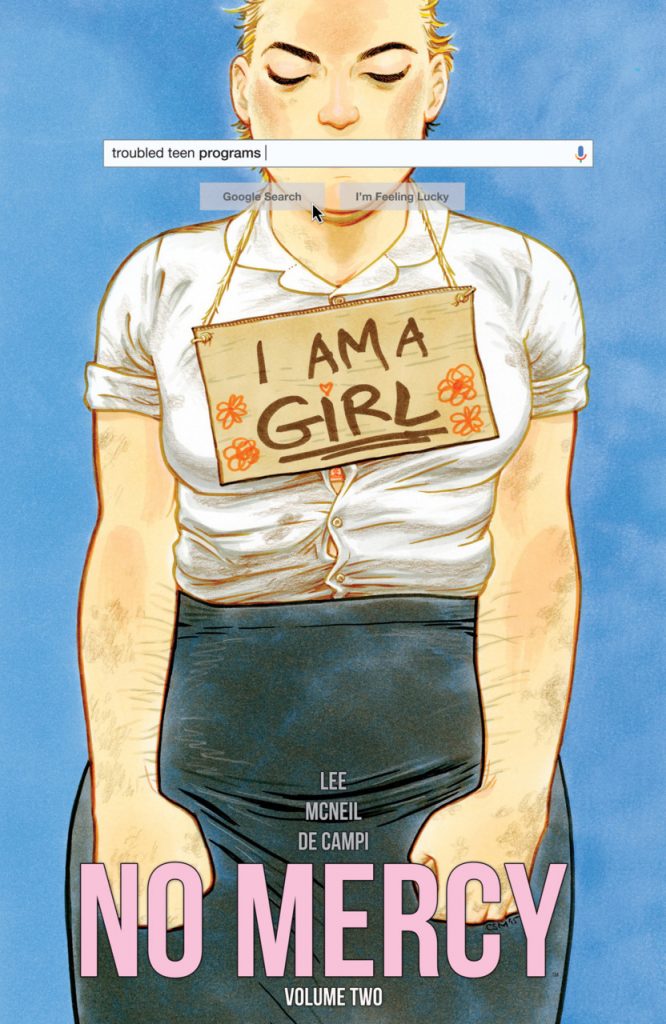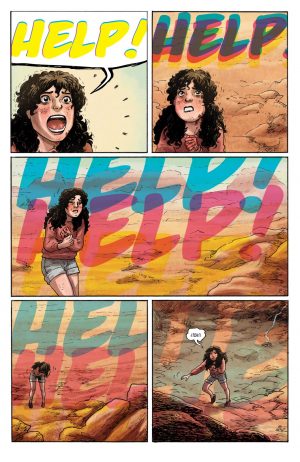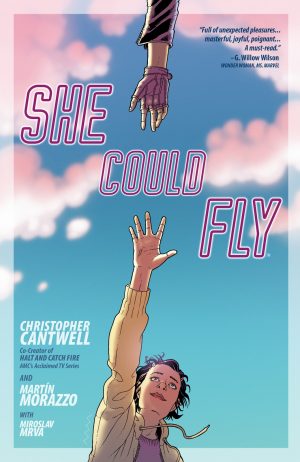Review by Frank Plowright
When a coach tipped over a Central American cliffside road not all the American student volunteers survived, and not all those who did were in any condition to walk the twenty miles back to civilisation. As seen to end Volume One, when cars did arrive at the crash site, it wasn’t necessarily a good thing. The one aspect in their favour is that the students were originally met by local nun Ines, who has an intimate understanding of the local situation and the likely dangers. As this volume opens she’s attempting to save the students via phone from her hospital bed.
As characterised verbally by Alex De Campi and visually by Carla Speed McNeil, many of those students are far from the finest examples humanity has to offer despite their volunteering for charity work. The lack of sympathetic personalities to a great extent mitigates what De Campi puts them through, although in one specific instance she ensures we know that the apple hasn’t fallen far from the tree, and appalling behaviour has at the least been learned, if not actively taught. To her credit, De Campi shows that it’s not just American tourists abroad who are entitled and stupid, and when some of the travellers consider they’ve avoided the worst of what could happen, De Campi begins showing the reaction to their disappearance in assorted households back home.
She’s extremely creative when it comes to piling on the indignities and dangers, not all of them confined to the deliberately vague Central American location, and an especially notable aspect of the characterisation is the lack of awareness among the teenagers. A couple realise they’re lucky to be alive, but to most out of immediate danger their experience is something to be exploited. At the lowest level it’s social media posts, but also moves well beyond.
McNeil defines the locations and personalities well, and the occasional piece of over-exaggeration generally slips by. There is, however, one instance of a cast member being hurt in the desert where for some reason McNeil dispenses with all restraint, cranks up the melodrama, and the result messes with the overall mood. It’s not De Campi’s greatest moment either. For her story she needs a desertion to have consequences, but perhaps a snake bite might have been the better option. That’s only a minor slip, though, and overall she keeps the tension high, and even the crash survivors back in civilisation have their problems.
By the end of this volume there’s been a greater focus on the troubled Charlene than anyone else, De Campi providing a thoughtful lead up to a remorselessly grim final chapter that ought to resonate with everyone as we see what happened when Charlene’s parents attempted to ‘cure’ her. The most distressing aspect is the realisation that clinics such as the one shown still operate legally.
No Mercy ends with Volume Three, and this has been a middle section that betters a good introduction by cranking up the horror differently from what might have been expected. Unpredictability is good.





